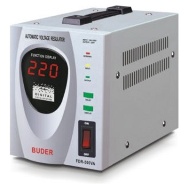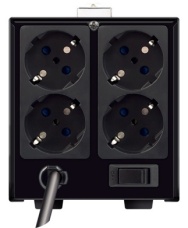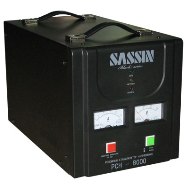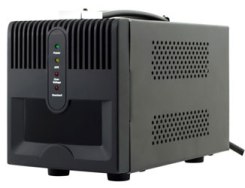Categories: Featured Articles » Interesting electrical news
Number of views: 30291
Comments on the article: 4
Protection of electrical appliances from low-quality voltage
 The article describes the most common devices for protecting your electrical equipment from voltage surges. The advantages and disadvantages of voltage stabilizers are considered.
The article describes the most common devices for protecting your electrical equipment from voltage surges. The advantages and disadvantages of voltage stabilizers are considered.
Our power networks have been in a rather neglected state for more than a dozen years, as a result of which multiple accidents occur, which leads to the failure of household appliances. This was especially felt by residents of large cities, where power grids were overloaded and operating to the limit.
Such devices as help you solve this problem. Surge Protectors, voltage regulators, surge protection devices.
A lot of equipment designed to protect electrical appliances is presented on the electrical equipment market. Consider only the most common devices that will help protect our devices from power surges.
 High and low voltage protection. These devices are designed to protect both individual consumers (TV, computer, refrigerator), and the entire apartment as a whole.
High and low voltage protection. These devices are designed to protect both individual consumers (TV, computer, refrigerator), and the entire apartment as a whole.
These devices are made in the form of a separate unit, for inclusion directly in an electrical outlet, then the devices are actually turned on in this unit. Also, this device is made in the form of a block, which is mounted on a DIN rail in a distribution panel.
The voltage control device completely disconnects the load when the voltage reaches the upper or lower limit. The threshold of the device is set independently.
The main advantage of this device is its ease of installation and relatively low price. Of the minuses, this is the constant operation of the device with frequent changes in voltage, which negatively affects the operation of the equipment.
 Economy Class Voltage Regulators. There are two main types of stabilizers in this class - servo-motors and relay. The advantage of these stabilizers is their relatively low price. Of the shortcomings, it is worth noting a small resource. For example, relay type stabilizers have switching relays. Relays are designed on average for 40,000 times of operation, and this is approximately 1.5-2 years.
Economy Class Voltage Regulators. There are two main types of stabilizers in this class - servo-motors and relay. The advantage of these stabilizers is their relatively low price. Of the shortcomings, it is worth noting a small resource. For example, relay type stabilizers have switching relays. Relays are designed on average for 40,000 times of operation, and this is approximately 1.5-2 years.
One of the common “diseases” of this type of stabilizer is sticking of contacts at the time of switching. In servo-motor stabilizers, where voltage is controlled by a slider that slides along the turns of the transformer, inter-turn short circuit or sticking of the slider is a “normal” phenomenon.
Also, the disadvantages of these devices include the response time to changes in the input voltage, the noise that these devices emit.
 Elite Voltage Regulators. The principle of operation of these stabilizers is based on voltage regulation by means of electronic switches. There are step-type stabilizers, where the voltage changes with a certain step, and stabilizers with infinitely adjustable.
Elite Voltage Regulators. The principle of operation of these stabilizers is based on voltage regulation by means of electronic switches. There are step-type stabilizers, where the voltage changes with a certain step, and stabilizers with infinitely adjustable.
The main advantages of this type of stabilizers include their reliability, speed, response time to voltage changes of about 20 ms, no noise, battery life. Of the shortcomings, it is worth noting the relatively high cost.
Before you decide to purchase any of the devices, we strongly recommend that you consult a qualified specialist who will monitor the voltage in your network, measure the load consumed by your devices, make the necessary calculations, based on which you can make the right choice.
P.S. Today, the sophisticated consumer is no surprise. He can freely purchase anything with the help of the Internet, including voltage stabilizers. HTo buy a good stabilizer, you need to go only to a specialized store selling original equipment. The family of voltage stabilizers is diverse in their design solutions. Models of various types and various cost are on sale.
See also at e.imadeself.com
:
